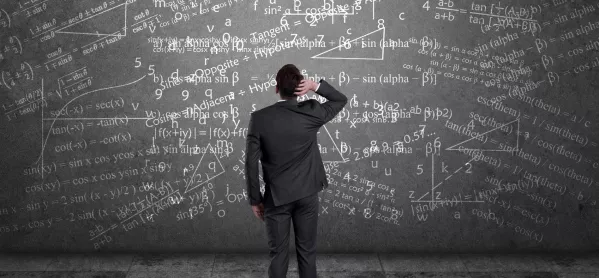- Home
- How to grade questions in the new GCSE system
How to grade questions in the new GCSE system

If you have looked at the new GCSE grading system and not only decided that it is going to be a pain to implement and explain to students and parents, but have also found that you are not clear on how exactly you should navigate it as a teacher, you are not alone. We’re all in the same boat.
“How do I know whether a pupil is on track for a 5 if I don’t know what a 5 is?” is a common complaint from teachers and leaders up and down the country. Unfortunately, because of the way that the grades will be awarded, we won’t really know what a grade 5 pupil will need to do until they actually do it, and so no one official is going to stick their neck out for fear of being wrong.
This is the hand we have been dealt so each subject is going to have to find a way to make it work. So how can we accurately measure pupil progress and targets within the new system?
In maths, those of us on social media have had the benefit of sharing ideas, with maths leads becoming increasingly inventive in their efforts to apply order to the chaos that has arisen.
Solutions have come to the fore, both for smaller assessments (such as topic-based tests) and for larger summative assessments based on multiple topics.
Grading topics is out
Exam boards will give a clear message that you cannot grade topics. I would absolutely agree, and particularly in the new GCSE where there is an explicit instruction to ensure that questions be designed to cover a range of grades for each topic.
Grading questions is not impossible
Exam boards say you can’t grade questions either - ie, say that X is a grade 5 question, or Y a grade 7 question - but here I disagree. Given what we know about how the paper and content is structured, we can look at certain types of question, notably the most basic questions in certain topics, and make quite a well-educated guess at the grade of pupil these questions are targeted towards.
Spotting the mid-range questions
Take, for example, the topic of trigonometry. In the previous GCSE specification, trigonometry existed only on the higher tier papers. For the new GCSE, it is now one of the topics that appears over both papers. The crossover questions between foundation and higher tiers are all graded between 4 and 5. Therefore the most straightforward type of trigonometry question (the sort of question where a triangle is presented quite simply and the value to be found quite clear) must be within these two grades. Given that grade 5 spans the top of the old grade C and the bottom of the old grade B, it is reasonable to assume that basic trigonometry questions are aimed at pupils who will achieve grade 5 and above; in that if they were grade 4 (lower C) they were likely to have been in the old foundation tier paper already.
The same argument can be made for the basic questions on topics like solving quadratics by factorising, simultaneous equations, surds and all of these topics that have dropped into the foundation tier; and so we can be reasonably sure that each of these topics starts at grade 5.
Spotting the low-grade questions
Those topics that were always in the crossover between foundation and higher must begin in either grades 3 or 4, as the old crossover was at the D and C grade; and, in reality, we can often tell the difference (for example, I would assert that basic use of Pythagoras’ theorem is at grade 4 rather than 3). At the lower grades, the most straightforward basic number questions and the most basic geometrical properties are going to be aimed at grade 1 pupils, while the expansion of single brackets using an algebraic term, substitution into reasonably complex formulae with negatives, and calculating gradients are all listed as “basic foundation content” but are of an increased difficulty that indicates they are more aimed at the grade 3 candidate.
Spotting the high-grade questions
Even at the top end, those topics that have always appeared later in the paper, including in the new spec materials, we can fairly safely say start at grade 7; so the basic questions on skills like completing the square, translating graphs, and trigonometry applied to triangles that aren’t right-angled can all be said to start here.
To recap…
A careful perusal of the specification, an understanding of how topics appeared on the old GCSE specifications compared with the new (where applicable) and how the new papers are structured (with 50 per cent of the marks on higher tier aimed at grades 7+ and 50 per cent of the foundation tier aimed mostly at grades 4 and 5) allows the most basic questions on the majority of topics to be “graded”; and, of course, once it is known where the grades for a topic start, estimates can be made at the grade of candidate that a question is aimed at for lots of questions in the new GCSE.
So my advice for leaders or teachers is to look at which grade candidates the basic questions on a topic are aimed at, and then build up from there.
Peter Mattock is director of maths and numeracy at Brocklington College in Leicestershire. He is on twitter @MrMattock
Want to keep up with the latest education news and opinion? Follow TES on Twitter and like TES on Facebook
Keep reading for just £1 per month
You've reached your limit of free articles this month. Subscribe for £1 per month for three months and get:
- Unlimited access to all Tes magazine content
- Exclusive subscriber-only stories
- Award-winning email newsletters



